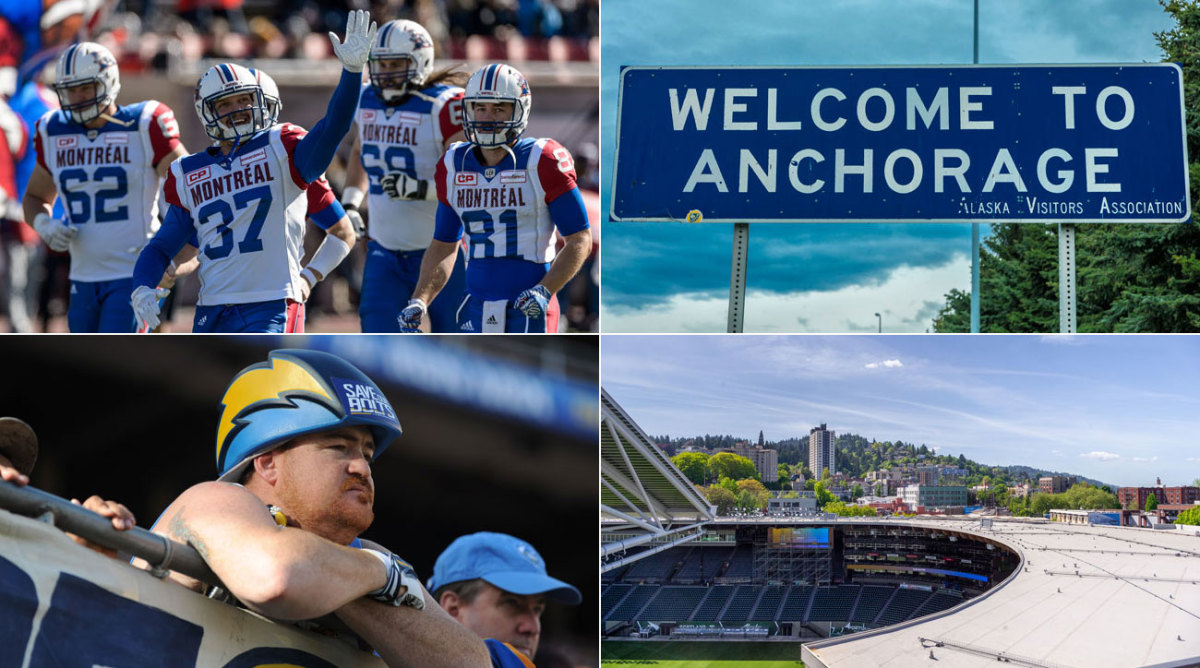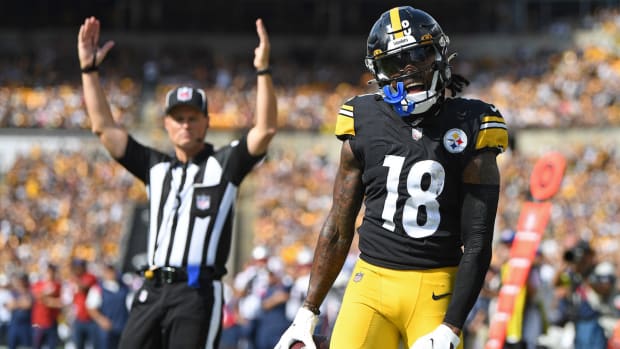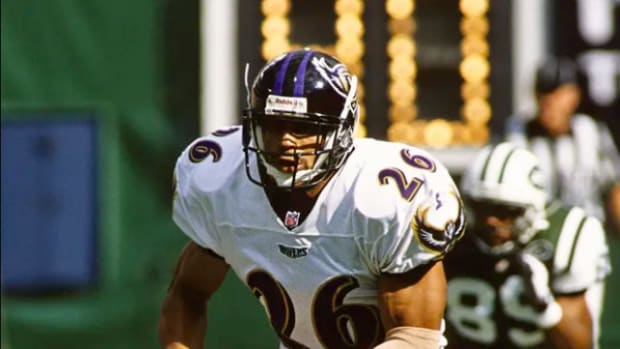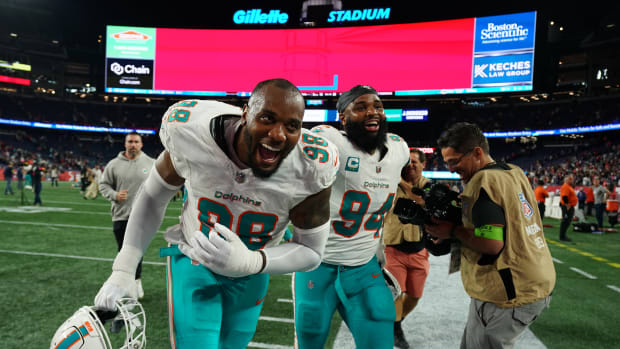Which Cities Would Deserve the Newest NFL Expansion Team?

We’re back with another summer Friday roundtable. The last two weeks, our writers have given their picks for the teams that have improved the most this offseason and the ones that have gotten worse. This week, the conversation around Buffalo’s stadium situation got us thinking. Relocation is usually an unpleasant topic, but expansion sounds like harmless fun. Forget, for a moment, about whether or not the league should bring in a new team (or two). Let’s just have a little fun thinking about where the new teams could go and what they’d be called.
Austin Coyotes
I’m looking for a place that has the population, interest and wealth to support a team. A place where the fervor for football is strong. A place that’s growing. A place that’s got the boomtown business potential the league was looking for when it expanded to Charlotte and Jacksonville in 1995.
I know the McNairs and Joneses won’t like it, but the best unoccupied market in these United States is sitting right down the road from Houston and Dallas in Central Texas. That’s right, a little over a decade after both the Raiders and Saints flirted with the area, the San Antonio/Austin metroplex (yup, we’ll steal that from Dallas too) is ripe and ready to be home to an NFL team.
Those two cities aren’t seen as a combined market but are just a few Buc-ees Truck Stops away from each other, sitting less than 80 miles apart—the Alamodome is actually 83 miles from Sixth Street in the state’s capital. And thanks to the growth of both areas, the urban sprawl between the two is probably 10-15 years away from melding the two metros, with small cities like San Marcos and New Braunfels (Kliff Kingsbury’s hometown!) in between.
San Antonio, as a TV market, is bigger than Kansas City, Milwaukee, Cincinnati and Las Vegas on its own. Combine it with Austin, and you have 1.71 million TV households, which is more than Miami-Fort Lauderdale or Denver, and in the ballpark of Minneapolis-St. Paul and Seattle-Tacoma. It’s fair to think the number will keep rising, too, considering that Austin is the fastest growing major metro area (up 26 percent since 2010) in America.
With that has come a tech boom and economic explosion in the region, smack in the middle of the most football-crazy state in America. And while Austin brings the cash and growth, San Antonio and its prominent Spanish-speaking community can serve as a gateway for the league into Mexico.
Now we just need a name. I considered the Austin Armadillos, but I’m not sure that’s an aggressive enough animal. So why not honor Texas’s football legacy, and the cinematic triumph that was Varsity Blues, and call them the Coyotes? (Only pronounced KY-oats in our case.) —Albert Breer
Montreal Rouges
It’s been fun to watch the success of the NBA’s Toronto Raptors, and how they’ve been embraced as Canada’s team. I wouldn’t feel right putting an NFL team in Toronto, given the close proximity to Buffalo and the fact that the league is already angling for a new stadium or else threatening to leave. But Montreal would be a perfect spot for Canada’s team. The CFL’s Montreal Alouettes have a rich history with seven Grey Cups: One in 1949, then three in the ’70s and three since 2000.
The Alouettes already have a stadium. It’s small by NFL standards, but still comes in handy. I know it may seem like two teams fighting for attention in the same city could cannibalize interest, but the league is fine with New York and L.A. teams sharing stadiums, and Montreal’s two wouldn’t even be in the same league. In this case, the CFL’s season runs from June through the Grey Cup in late November, so the NFL team would have the stage to itself for the playoff push. Or they’d have it as early as the first week of November if the Alouettes miss the postseason entirely.
I like naming them the Rouges for several reasons. First, it’s a nod to the CFL, where a rouge is a one-point score that doesn’t exist in American football. Second, a French name is a nice tie-in to the local region and largely bilingual fan base. And finally, it comes with a built-in color scheme. Bonjour, Montreal Rouges. —Mitch Goldich
Portland Pinots
The Willamette River runs through Portland, and the Willamette Valley is most likely home to the last great pinot noir you drank. I envision a riverside game-day experience notable for the quality of wine, beer and coffee served and the exceptional greenness of the venue. No, this stadium does not exist, and no, I have no idea where the funds will come from. (Herein lies the reason why Portland does not have an NFL team.) But Portland certainly has a lot of pros, including the 22nd-largest TV market per the latest Nielsen rankings (ahead of 11 current NFL cities) and strong fan support for the Trail Blazers, Timbers and Thorns. Not to mention, 4,609 people signed a petition to bring the NFL to Portland five years ago and there is already a Twitter account, @NFLtoPortland.
The Rose City appears to be a likelier candidate for a MLB team (Russell Wilson and Ciara have invested in the Portland Diamond Project toward that end), but as a 2015 article in The Oregonian stated, “It’s Football! You love football!” (Note: This was the only “pro” listed for a Portlandian NFL team.) Maybe I just really like pinot noir. —Jenny Vrentas
San Diego Sculpins
If the NFL were to add a 33rd team via expansion, I’ll tell you where they should go. But first, a small technical thing: A 34th team should follow close behind, for obvious reasons.
With that note out of the way: It’s time for the NFL to go back to San Diego, where the weather is impeccable, the fans love their team and there is no Dean Spanos. We understand the only reason the Chargers are now the L.A. Chargers is because Spanos tried to strong-arm the city into publicly funding a new stadium the team—admittedly—badly needed. But in this bizarre sports world we inhabit, the billionaire who prints millions even if his team goes 0-16 for multiple seasons in a row wanted the taxpayers to fund the stadium. San Diego, rightly, said “nah, bruh.”
The city showed it would lease the city of the new stadium for $1 per year for 99 years, and that’s good enough for me. Just the other day in Buffalo, NFL commish Roger Goodell boasted that of the $13 billion spent on NFL stadiums in the past eight years, $11 billion has been private money. And with a line of tech and hedge-fund billionaires waiting for their shot at owning a shiny new NFL toy, there’s no reason they can’t fund their $2-3 billion stadium with private money on land they lease for a buck in the wonderful city of San Diego.
As for the name, I propose naming the team after my favorite beer from the city: The San Diego Sculpins. Immediately the Sculpins would have the best color scheme in the league, and the name really rolls off the tongue. —Jonathan Jones
Oklahoma City Lightning
If the success of the NBA’s Oklahoma City Thunder is any indication, then OKC is the ideal location for the NFL’s next expansion team. Since the Thunder came from Seattle in 2008, Oklahoma City residents have embraced the NBA team, and given that there are no other professional sports teams in the city, that passion should carry over to an NFL team. And Oklahoma isn’t unfamiliar to football, with fandom for college football running deep in the state.
By the way, the circumstances by which the Sonics left Seattle, and the bitterness Seattleites still have over the situation, could make for a potentially incredible football rivalry. Oklahoma City fans might not care much about Seattle, but you can bet Seahawks fans would relish any chance to watch their team inflict pain on a team with OKC on their jerseys. Put those teams in the same division and things could get intense.
Location-wise, Oklahoma City is closest to Jerry Jones’s team in Dallas (there’s no doubt the powerful owner will protest this expansion team), but there’s a stretch of states north of Oklahoma the Lightning can target, including the newly football-less St. Louis market. The Oklahoma City TV market ranks No. 41 in the U.S., just behind Las Vegas at No. 40 and higher than Jacksonville (47), New Orleans (50) and Buffalo (53).
The Lightning team nickname is a nod to the Thunder, and fans should absolutely get ready for Imagine Dragons to be pulsing through those football stadium speakers constantly. —Bette Marston
Quad Cities Tractors
Iowa only has a handful of professional sports teams, and that has always made me sad. So I propose an NFL team for the Quad Cities, a metropolitan area that includes two cities in eastern Iowa (Davenport and Bettendorf) and two in western Illinois (Moline and Rock Island), separated by the Mississippi River.
Rock Island actually had an NFL team, the Independents, in the earliest days of the league (1920-26), when the Bears were the Decatur Staleys and the Packers were funded by the Acme Packing Company. The Independents weren’t affiliated with a company or organization—hence their name. The Packers and the Staleys survived into the modern era, but the Independents went out of business after the team left the NFL for the rival American Football League in 1926.
The Quad City Tractors’ name is a nod to the area’s major industry: tractor production. John Deere is still headquartered in Moline, and of course, we all know Iowa is mostly rural.
If you're thinking this market is too small for a pro team, think again.
Green Bay's current population: 105,116
Quad Cities population: 385,630
More than 3 million people live in Iowa, and plenty more in Western Illinois who would also root for the Tractors. —Kalyn Kahler
Anchorage Orcas
I’d like to welcome the Anchorage Orcas to the NFL. The league has never played even an exhibition game in our 49th and largest state, but in many ways Alaska is an ideal spot for pro football. The people are rugged and hardy. There’s frozen tundra in abundance. Plus, in a few decades Anchorage will have the climate of Miami and become an ideal Super Bowl site. For now, the locals can build a roofed venue—the Palin Dome?—with their excess oil money. And since it’s so close to Russia, the team will have a scouting advantage on regarding as-yet untapped talent pool. —Mark Mravic
Bismarck Glaciers
The next city to get an NFL team should be Bismarck, North Dakota—a central location representing states without NFL teams, such as Montana, Wyoming and both Dakotas. The team will be called the Glaciers, and will play in a stadium called the Ice Dome, which will be designed to combine both the advantages of being indoors and the built-in advantage of cold temperature tolerance that people of the area pride themselves on.
Why the Glaciers? Well, it represents both the former Lake Agassiz, a glacier lake named for Swiss-born polygenist Louis Agassiz that ceded to create the Red River valley that Fargo currently sits in, and serves as a reminder that the world is burning due to man made toxins and pollution. The Glaciers will operate completely on sustainable power, underlined by their pre-game routine of having a famous person from the area crank a man-powered generator to turn the lights on. Fans will wear wind turbines on their heads that can turn on small lights attached to their helmets. —Conor Orr
• Question or comment? Email us at talkback@themmqb.com.





































